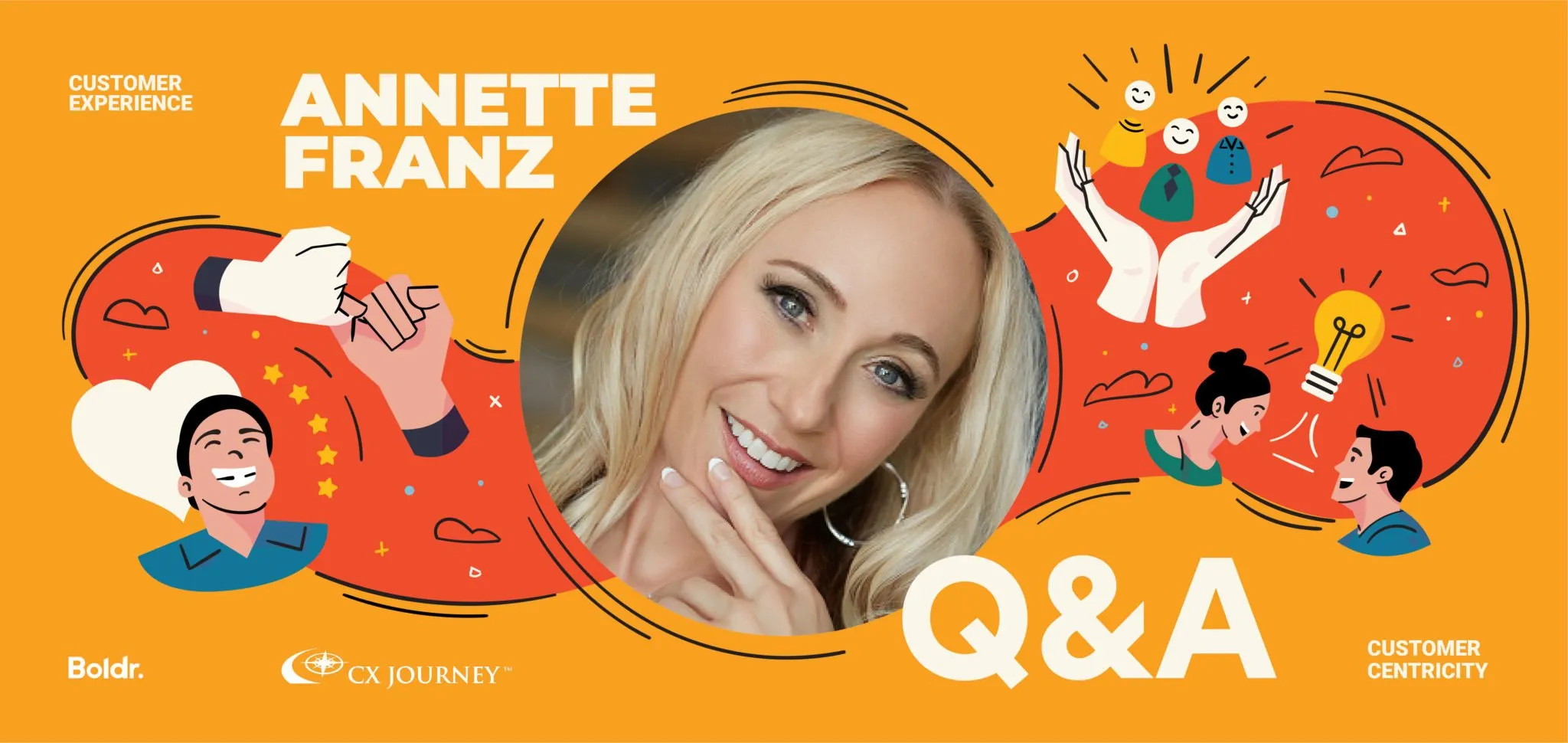Customer Centricity is at the heart of a great customer experience.
Brands that put in the effort to delight customers at every encounter — from the online shopping experience to the email campaigns to customer support calls — understand the importance of customer centricity. Research by Deloitte found that customer-centric companies were 60% more profitable compared to companies that were not focused on the customer.
And yet, many businesses still struggle with becoming a truly customer centric organisation.
To understand this better, we interviewed CX Leader, Annette Franz, CCXP; founder + CEO, CX Journey Inc. She has more than 25 years of experience helping companies understand their employees and customers, and designing customer experience strategies to deliver a better experience for all constituents. She recently wrote a book on the subject called Customer Understanding: Three Ways to Put the “Customer” in Customer Experience (and at the Heart of Your Business).
1. What is the most important building block when creating a customer-centric business? And what do you think is the biggest barrier to adopting customer-centricity?
Culture is Key
The most important building block when creating a customer-centric business is culture. It is the foundation of a customer-centric business. Culture = core values + behavior. Define core values that align with and support a customer-centric organization; for example: listening, people first, customers first, deliver WOW through service, obsess about customers, strong relationships create guests for life, innovation, collaboration, and more. Once the core values are set, be sure to define acceptable behaviors relative to each value. And then socialize and operationalize them.
What Customer Centricity Really Is
I think the biggest barrier to being a customer-centric organization is not understanding what it really is. Many people think that it’s all about just giving the customer what she wants, saying “yes,” and bending over backwards for her. At the same time, some folks believe that being customer-centric is as simple as delivering friendly and helpful service.
What is it really? Customer-centric companies put the customer at the center of all they do. That means that they ensure that they make no decisions without first thinking of the customer and the impact those decisions have on the customer. The customer is infused into everything they do. I like to say: No discussions, no decisions, no designs without bringing in the customer and her voice, without asking how it will impact the customer, how it will make her feel, what problems it will help her solve, what value it will create and deliver for her.
2. What are the key benefits of a customer-centric culture to customer experience?
Customer Loyalty
When the business is customer-centric, customers feel it. Customers know they matter to the business; they know you listen; they see how you solve problems and deliver value. When you deliver value for customers, you also create value for the business. When this happens – when they know you listen and in turn deliver value – you are on the road to building longer-term relationships with your customers.
Employee Engagement
But customer-centricity isn’t just about customers. In order to have a customer-centric culture, you must put employees more first. As you know, without customers, you have no business. It’s all about the customer. But you won’t have customers if you don’t have employees to build, to sell, and to service the things that customers buy.
In order to have happy, loyal customers, you have to care for your employees and treat them well. Without employees, you have no customer experience! At the end of the day, your business focus has to be on the people who drive your business—both employees and customers (and vendors, partners, etc.). There can be no customer-centric culture without focusing on your employees first. Employees reap the benefits, for sure!
Brand Consistency
Customer-centric businesses also value consistency and delivering consistently. Customers always know what to expect from customer-centric businesses because they have heard the brand promise and have experienced it. No smoke and mirrors. That consistency also builds trust, which is a solid foundation for any relationship.
Innovation
Innovation is another benefit of customer-centric businesses. Customers provide feedback. Businesses listen, co-create, and innovate to solve customer problems.
3. When companies pursue outsourcing (let’s say, outsourced customer support), a common fear is that it will negatively affect customer experience. What are some ways you can suggest to make sure that your customer-centric culture is maintained when working with outsourced teams?
I have a lot of thoughts on this, but I’ll answer it with two suggestions that are top of mind, for sure.
Choose Partners Wisely
I think you have a responsibility to your customers to vet your partners thoroughly. That doesn’t just mean from a financially-sound perspective. Choosing partners wisely means that you find someone who is proud to represent your brand and is willing to uphold the brand standards that you spell out for them. Partners must honor your commitments (service, product, and experience-wise) to your customers.
Solid SLAs
The second recommendation is to add SLAs (service level agreements) to your partner agreements. The partner must uphold certain customer satisfaction scores, NPS, employee satisfaction scores, etc., and if it doesn’t, it gets a warning and could potentially invalidate the partnership agreement. Is that crazy? I don’t think so. Not if you want to protect your brand.
I think you need to set the same types of expectations with partners about your brand as you would if the contact center were in-house. Always remember this: It’s your brand. They are your customers. It is your customer experience.
Thanks to Annette for answering these questions. If you’d like to learn more about Annette, you can follow her on LinkedIn.
Explore outsourced ecommerce customer support solutions with Boldr.


